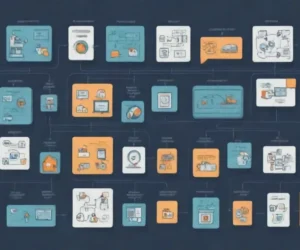
Can Machine Learning Accurately Predict Diabetes Complications?

Machine learning is transforming healthcare by providing tools for early prediction and personalized treatment plans. One area of significant impact is in predicting complications associated with diabetes. By leveraging vast amounts of patient data, machine learning models can identify patterns and risk factors that may indicate the likelihood of developing complications such as diabetic retinopathy, neuropathy, and kidney disease.
How Can Machine Learning Help Predict Diabetes Complications?
Machine learning can help predict diabetes complications by analyzing patient data, identifying risk factors, and providing actionable insights for early intervention and treatment.
Benefits of Using Machine Learning in Predicting Diabetes Complications
Benefits of using machine learning in predicting diabetes complications include the ability to analyze large datasets quickly and accurately. Machine learning algorithms can uncover hidden patterns and correlations in patient data that may not be apparent through traditional statistical methods. This capability allows for more accurate and timely predictions, enabling healthcare providers to take proactive measures to prevent or manage complications.
Challenges and Limitations Predicting Diabetes Complications
Challenges and limitations in predicting diabetes complications with machine learning include data quality and availability, model interpretability, and the generalization of models across different populations. Ensuring that the data used to train machine learning models is accurate and representative of the broader patient population is crucial. Additionally, complex models such as deep learning can be difficult to interpret, making it challenging to understand the underlying reasons for predictions.
Optimal Frequency for Regression Testing to Ensure Software QualityIdentifying Risk Factors
Identifying risk factors is a critical step in predicting diabetes complications. Machine learning models can analyze various factors such as age, gender, blood glucose levels, blood pressure, cholesterol levels, and lifestyle habits to determine which variables are most predictive of complications. This information can help healthcare providers focus on the most relevant risk factors and develop targeted intervention strategies.
Predictive Accuracy
Predictive accuracy is essential for the reliable use of machine learning models in clinical settings. By continuously training and validating models with new patient data, machine learning can achieve high levels of accuracy in predicting diabetes complications. This accuracy ensures that the predictions made by the models are dependable and can be used to inform clinical decisions.
Enhancing Personalized Medicine
Enhancing personalized medicine is one of the most significant advantages of using machine learning in healthcare. By analyzing individual patient data, machine learning models can tailor predictions and treatment plans to each patient’s unique characteristics and risk factors. This personalized approach can lead to better patient outcomes and more effective management of diabetes and its complications.
Diabetic Retinopathy, Neuropathy, and Kidney Disease
Diabetic retinopathy, neuropathy, and kidney disease are common complications of diabetes that can have severe impacts on patients’ health. Early prediction and intervention are crucial for preventing or mitigating these complications.
Improving Anti-Money LaunderingDiabetic Retinopathy
Diabetic retinopathy is a condition where high blood sugar levels damage the blood vessels in the retina, leading to vision problems and potentially blindness. Machine learning models can analyze retinal images and other patient data to detect early signs of retinopathy, allowing for timely treatment and management to prevent progression.
Neuropathy
Neuropathy involves nerve damage caused by diabetes, leading to symptoms such as pain, numbness, and weakness, particularly in the hands and feet. Machine learning can help predict the onset of neuropathy by analyzing patient data, including blood glucose levels, duration of diabetes, and other risk factors. Early prediction can facilitate interventions to manage symptoms and prevent further nerve damage.
Kidney Disease
Kidney disease (diabetic nephropathy) is another serious complication of diabetes, where the kidneys' filtering capabilities are impaired. Machine learning models can predict the risk of kidney disease by analyzing factors such as blood pressure, blood sugar control, and protein levels in urine. Early detection allows for treatments that can slow the progression of kidney disease and improve patient outcomes.
Treatment Plans and Interventions
Treatment plans and interventions are crucial for managing diabetes and preventing complications. Machine learning can assist in developing and optimizing these plans based on individual patient data.
Analyzing Satellite Data and Classifying with Machine Learning in QGISIdentifying High-Risk Patients
Identifying high-risk patients using machine learning involves analyzing patient data to predict which individuals are most likely to develop complications. By identifying these high-risk patients early, healthcare providers can implement more aggressive monitoring and preventive measures, reducing the likelihood of severe complications.
Optimizing Treatment Plans
Optimizing treatment plans is achieved by using machine learning models to recommend personalized treatment strategies. These models can analyze a patient’s unique risk factors and suggest the most effective treatments, such as specific medications, lifestyle changes, or monitoring regimens. This tailored approach ensures that each patient receives the most appropriate care based on their individual needs.
Predicting Disease Progression
Predicting disease progression involves using machine learning to forecast the likely course of a patient’s diabetes and its complications over time. By understanding how the disease is likely to progress, healthcare providers can make informed decisions about treatment adjustments and long-term care strategies. This proactive approach helps in managing diabetes more effectively and improving patient quality of life.
Machine learning offers significant potential in accurately predicting diabetes complications. By leveraging patient data, identifying risk factors, and providing personalized treatment plans, machine learning can enhance the management of diabetes and improve patient outcomes. Despite challenges, the continuous evolution of machine learning algorithms and data availability promises even greater accuracy and effectiveness in the future.
AI-Enabled Arduino Projects: Exploring Machine LearningIf you want to read more articles similar to Can Machine Learning Accurately Predict Diabetes Complications?, you can visit the Applications category.



You Must Read